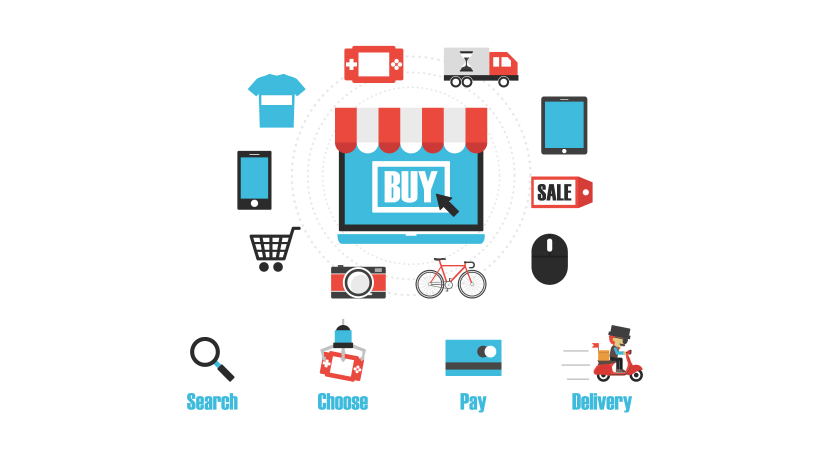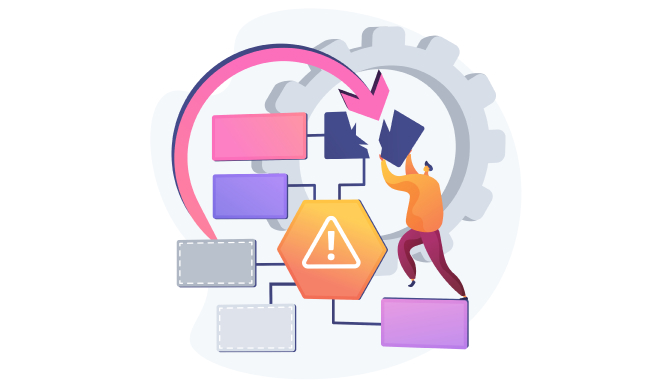
Integrating Google Shopping with E-commerce Platforms
Overview of Google Shopping and its Importance
Hey there, have you heard about Google Shopping? If not, let me fill you in. Google Shopping isn’t just the latest trend; it’s revolutionizing how we shop online. Essentially, it's Google's way of enhancing the traditional search, making it more interactive and visually appealing. By displaying product images, descriptions, and prices directly on the search results page, Google Shopping makes online shopping a breeze. With a simple search, shoppers can immediately see a range of products, making their buying journey more intuitive and efficient.
Role of E-commerce Platforms in Modern Business
With the digital age upon us, E-commerce platforms have rapidly become the backbone of retail. These platforms have shifted the shopping paradigm, allowing businesses to reach a global audience from a single digital storefront. Whether you're an artisan selling handcrafted goods or a large retailer with a broad inventory, there's an E-commerce platform out there tailored to your needs. These platforms offer businesses a host of functionalities, from inventory management to payment processing, ensuring that both the seller and buyer have a seamless experience.
The Significance of Integration for Online Retailers
Alright, let’s chat integration. Marrying the capabilities of Google Shopping with E-commerce platforms is akin to combining peanut butter with jelly; it's a match made in heaven. With this integration, online retailers can effortlessly showcase their products on one of the world's largest search engines, thereby amplifying their reach. The fusion ensures that when a potential customer searches for a product on Google, they can instantly see the offerings from various online stores, compare prices, and make an informed decision.
Basics of Google Shopping and E-commerce
What is Google Shopping?
Let’s paint a picture. Imagine typing in a product name on Google and immediately being presented with vivid images, prices, and stores offering that product. That, my friend, is Google Shopping in action. It’s an interactive shopping experience right within Google. Those engaging visual ads you see? Those are Product Listing Ads (PLA), designed to capture the shopper's attention instantly.
Understanding the E-commerce Platform Landscape
Delving into the world of E-commerce platforms is like exploring a bustling digital city. Each platform, whether it's Shopify, WooCommerce, Magento, or any of the many others, offers its unique flair. They cater to different business sizes, industries, and technical expertise levels. Some are tailored for those just starting their E-commerce journey, while others serve enterprise-level businesses with complex needs. But at the heart of it all, they provide businesses the infrastructure needed to operate in the digital realm.
Introduction to Google Merchant Center
Before we advance, let's touch on the unsung hero: the Google Merchant Center. Think of it as the backstage of a concert. While it might not be in the spotlight, it's where all the magic happens. The Google Merchant Center is the central hub where businesses upload and manage their product details, ensuring they are showcased accurately on Google Shopping.

The Process of Integration
Pre-integration Checklist
Alright, before we jump into the nitty-gritty, let's set the stage. The first and foremost thing on our checklist is the quality of your product feed. It's the foundation of your integration. This feed contains all the essential information about your products, from their names and images to their prices and availability. Ensuring this information is accurate and optimized will make the integration process smoother and more effective.
Setting up Google Shopping on Your E-commerce Platform
Eager to get started? Let’s integrate Google Shopping into your E-commerce site, step by step. The process begins by linking your E-commerce platform with the Google Merchant Center. Once connected, you can start syncing your product feed. Many E-commerce platforms offer built-in integrations or plugins to make this step seamless. The goal? A perfect Google Shopping setup for E-commerce enterprises, big or small.
Utilizing the Google Shopping API for Advanced Integration
For those with a penchant for tech, the Google Shopping API is your ticket to a streamlined experience. With the API, businesses can automate data feeds, ensuring their product listings on Google Shopping are always up-to-date. It also offers more advanced features, like customizing how products are displayed and integrating real-time inventory data.
E-commerce SEO and Its Relevance to Google Shopping
Principles of E-commerce SEO
SEO, or Search Engine Optimization, is the secret sauce of the digital world. But what does it entail for an E-commerce business? At its core, E-commerce SEO involves tweaking various elements of your online store so that it ranks higher on search engines, driving organic traffic. This encompasses on-page optimization, such as keyword-rich product descriptions, meta tags, and high-quality images, as well as off-page optimization like backlinking.
How Product Listing Ads (PLA) Affect SEO
The relationship between PLAs and SEO is fascinating. While PLAs are essentially paid ads, their effectiveness greatly depends on how well they're optimized. Like traditional SEO, a well-optimized PLA can result in higher click-through rates, driving more traffic to your E-commerce platform. But there's more. The feedback from your PLAs, such as click-through rates and conversion rates, can provide invaluable insights into consumer behavior, helping further refine your SEO strategy.
Tips for Optimizing Your Product Listings for Better Visibility
Maximizing visibility is key. Start with high-quality images that capture attention. Use keyword-rich, but natural product descriptions. Remember, consistency is crucial. Ensure that product details, pricing, and availability are uniform across your E-commerce platform and Google Shopping. Lastly, encourage reviews. Not only do they build trust, but they also provide fresh, user-generated content that search engines love.

The World of Shopping Feed Management
What is Shopping Feed Management?
Shopping Feed Management might sound complex, but let's simplify it. It's the act of overseeing and optimizing the data feed you send to platforms like Google Shopping. This feed is like a dynamic catalog of your products, containing details like names, descriptions, prices, and more. Effective feed management ensures your products are presented accurately and enticingly to potential buyers.
Benefits of Efficient Shopping Feed Management
A well-managed shopping feed is like a well-oiled machine—it just works better. For one, it ensures that your product listings on platforms like Google Shopping are accurate and up-to-date, reducing potential discrepancies that could turn away buyers. Secondly, a refined feed can lead to better ad placements and higher click-through rates. Finally, it provides a seamless shopping experience for users, which can lead to increased trust and higher conversion rates.
Tools and Strategies for Effective Management
Harnessing the right tools can make feed management a breeze. Softwares like GoDataFeed or Feedonomics can help automate and optimize your product feeds. Regular audits are also essential. Periodically checking for errors, outdated information, or opportunities for optimization can ensure your feed is always in tip-top shape.
Advantages of E-commerce Google Shopping Integration
Boosting the Visibility of Products
Merging E-commerce platforms with Google Shopping is akin to placing your products on a billboard on the internet's busiest highway. The integration makes your products instantly more visible to a vast audience, increasing the chances of clicks and conversions.
Enhancing Shopping Campaigns with Rich Data
Data is power. Google Shopping provides a treasure trove of data, from user behavior to conversion rates. When integrated with an E-commerce platform, this data can be used to refine shopping campaigns, tailoring them to your target audience's preferences and behaviors.
Benefits of Google Shopping Integration: A Deep Dive
At its core, integrating Google Shopping with E-commerce platforms elevates the online shopping experience. It provides consumers with more choices and information right at their fingertips. For businesses, it offers increased visibility, refined marketing strategies based on rich data, and ultimately, a potential boost in sales and revenue.

Challenges and Solutions
Common Challenges in Integration
Now, while integrating Google Shopping with E-commerce platforms is transformative, it's not without its challenges. Some common hurdles include mismatched data between your E-commerce platform and Google Merchant Center, navigating the rules and guidelines set by Google for product listings, and potential discrepancies in product availability or pricing. Additionally, managing large product inventories can become cumbersome if not streamlined.
Solutions and Best Practices for Smooth Integration
Facing challenges? Don't fret. Here's how to overcome them:
- Regularly Update Your Feed: Consistency is crucial. Regularly update your product feed to ensure it aligns with the information on your E-commerce platform.
- Familiarize with Google's Guidelines: Google has specific requirements for product listings. Familiarize yourself with these guidelines to avoid potential hiccups.
- Use Automated Tools: Leveraging tools like feed management software can help streamline the integration process, especially for businesses with extensive product inventories.
- Monitor and Adjust: Regularly review the performance of your Product Listing Ads (PLAs) and adjust your strategies as needed.
Leveraging Integration for Maximum ROI
With the challenges addressed, the sky's the limit. Leveraging the integration effectively means constantly analyzing the data from Google Shopping and your E-commerce platform. Understanding consumer behavior, refining product listings based on feedback, and optimizing your marketing spend can all lead to a higher return on investment (ROI).
Conclusion
Future Trends in E-commerce and Google Shopping
The digital realm is ever-evolving. We can anticipate that as technology advances, the integration between platforms like Google Shopping and E-commerce platforms will become even more seamless. Think augmented reality shopping experiences, AI-driven product recommendations, and even more personalization.
The Importance of Staying Updated with Integration Best Practices
The digital world moves fast, and what's considered a best practice today might become obsolete tomorrow. It's crucial for businesses to stay updated. Joining forums, attending webinars, or simply setting up Google alerts on the topic can ensure you're always in the loop.
Final Thoughts on Harnessing the Power of Integration
Integrating Google Shopping with E-commerce platforms isn't just a trend—it's the future. As the lines between search engines and online shopping continue to blur, this integration will be paramount for businesses aiming to stay ahead of the curve. Embrace the change, harness the power, and watch your online venture thrive.
References
- Smith, J. (2021). Digital Retail Revolution: The Google Shopping Playbook. New York: E-commerce Insights Publishing.
- Patel, A. & Fernandez, M. (2022). "Optimizing E-commerce Platforms for Google Integration." Journal of Online Commerce, 28(3), 45-60.
- Harrison, L. (2020). Mastering Feed Management: Strategies for Today’s Retailers. London: Tech Horizon Publications.
 Mark Petrenko
Mark Petrenko 
